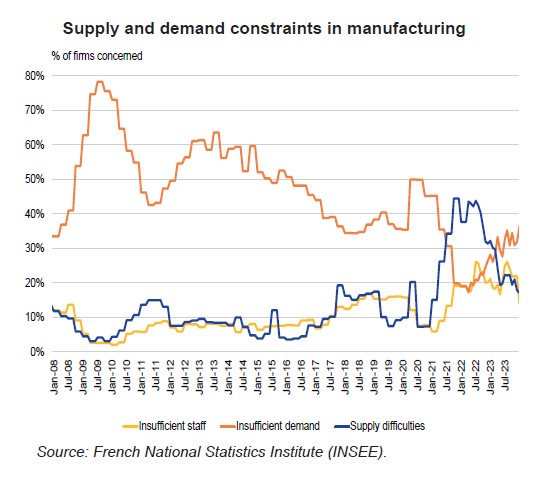Nowcasting French GDP Growth During Exceptional Periods
The series of crises from 2020 to 2023 has impacted France’s GDP and its growth drivers. The diminished performance of existing nowcasting models required alternative models to be developed. These alternative models show that supply factors became predominant determinants of French GDP growth in the recent period, corroborating our analysis of business outlook survey data.
Nowcasting, or very short-term forecasting, is a crucial tool for understanding major changes in the economy and detecting turning points in the business cycle. Nowcasting is the first stage in the economic forecasts at the two-year horizon established by the Directorate General of the Treasury to prepare France’s budget acts and stability programmes.
In the period from 2020 to 2023, supply difficulties arising from the COVID-19 health crisis and Russia’s war of aggression in Ukraine played a greater role in restricting economic activity than demand for firms’ output (see Chart). France’s economic trajectory during this exceptional period was thus influenced more by supply factors than by demand factors that typically dominate.
The predictive performance of economic models based explicitly or implicitly on demand variables thus worsened during the crisis period, notably in the case of the nowcasting models that rely on composite business climate indicators to predict GDP growth.
Alternative models incorporating automatic input variable selection can be used to identify, from a vast array of data sources, those items that make the greatest contribution to improving predictive performance. Such models are simple to interpret and econometrically similar to conventional models.
For the recent period, an ex-post estimation shows that variables such as supply constraints in manufacturing, which are typically absent from conventional models, would have made the greatest contribution to improving short-term GDP forecasting for France.
